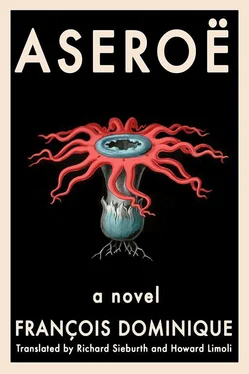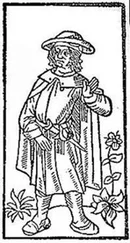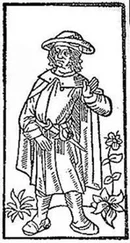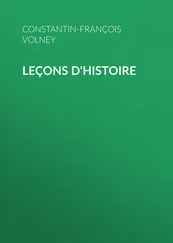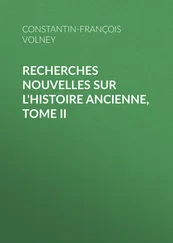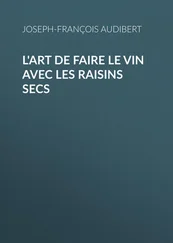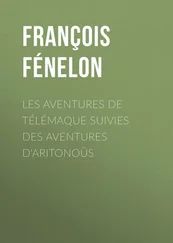François Dominique - Aseroë
Здесь есть возможность читать онлайн «François Dominique - Aseroë» весь текст электронной книги совершенно бесплатно (целиком полную версию без сокращений). В некоторых случаях можно слушать аудио, скачать через торрент в формате fb2 и присутствует краткое содержание. Город: New York, Год выпуска: 2020, ISBN: 2020, Издательство: Bellevue Literary Press, Жанр: Современная проза, на английском языке. Описание произведения, (предисловие) а так же отзывы посетителей доступны на портале библиотеки ЛибКат.
- Название:Aseroë
- Автор:
- Издательство:Bellevue Literary Press
- Жанр:
- Год:2020
- Город:New York
- ISBN:978-1-942658-78-8
- Рейтинг книги:5 / 5. Голосов: 1
-
Избранное:Добавить в избранное
- Отзывы:
-
Ваша оценка:
- 100
- 1
- 2
- 3
- 4
- 5
Aseroë: краткое содержание, описание и аннотация
Предлагаем к чтению аннотацию, описание, краткое содержание или предисловие (зависит от того, что написал сам автор книги «Aseroë»). Если вы не нашли необходимую информацию о книге — напишите в комментариях, мы постараемся отыскать её.
Aseroë — читать онлайн бесплатно полную книгу (весь текст) целиком
Ниже представлен текст книги, разбитый по страницам. Система сохранения места последней прочитанной страницы, позволяет с удобством читать онлайн бесплатно книгу «Aseroë», без необходимости каждый раз заново искать на чём Вы остановились. Поставьте закладку, и сможете в любой момент перейти на страницу, на которой закончили чтение.
Интервал:
Закладка:
François Dominique

ASEROË
Translated by
Richard Sieburth and Howard Limoli
To Suzanne Limoli and Richard Sieburth
1

Aseroë
SHE HAS ALWAYS AROUSED special feelings in me. Every year, at the outset of summer or sometimes as late as mid-autumn, I never fail to pay her a visit. It doesn’t take me long. While others might pass within a few feet of her, I see her from a distance, I recognize her, I approach her and bend down over her and in a soft voice speak the words that suit her, the name she bears. She immediately starts to blush. Her slender, elegant foot—as with all her kind—is attractively flushed.
I have no illusions: I know this slight flush is not a response to any affectionate words I might address to her, but a reaction to the properties of the ambient air, to the amount of carbon dioxide that the natural respiration of plants (or just my tainted breath) is likely to increase.
Once picked, she takes on a more vivid coloring, as though indisposed. She’ll be just as sweet to the taste, crisp and scented, so long as you don’t spoil her aroma with garlic and spices or smother her in common meadow mushrooms.
Amanita rubescens is the only apparently sentient mushroom I can name.
People are right to avoid that very ancient but very foolish tendency to project human attributes onto nature. I stroll through the woods, overwhelmed by the scenery—the dawn’s light, the lofty peaks, the crystal springs—and my mind is stupefied by the flood of metaphors that invade me.

Determined not to dabble in tawdry imagery, I wondered whether a state of mind might exist—or rather, a state of matter—in which words and things were not separate. If so, this discovery would open up a radically new field to all the forms of creation. As I idly posed to myself this curious question, I couldn’t begin to suspect the inhuman character of the artificial reality that would inevitably ensue.
I think the moment has come to explain my experiment. Let me first point out that mushrooms make up a very vast and almost infinite collection. When experts suggest the figure of 120,000 species of mushrooms, they know this figure has to be increased over the course of years: the multiplication of varieties, the abrupt mutations, the disclosure of new forms whose spores have been lying dormant for centuries force us to add endlessly to the matrix of a rigorous classification system already encumbered with unclassifiable types as well as with strange subspecies and their offspring. Besides, certain of these mycological abortions are so odd that you wonder whether the classification system itself, so patiently worked out by Quélet, Kühner, Pilát, Romagnesi and so many others, shouldn’t be reopened for examination.
What animal or vegetable species would be capable of evolving to the point of rendering obsolete the great divisions between vertebrates and invertebrates, cryptogams and phanerogams? Not a single one. That doesn’t prevent the animal or vegetable kingdom from creating new species (the innumerable varieties of orchids provide a good example), but in these cases the main lines of the classification system have reached a sufficient level of certainty to embrace all species, including those whose lives—yet to come—cannot be named.
As for mushrooms, it’s another matter altogether. They don’t belong to a defined kingdom. In a number of ways, they are animals, protozoans or protophytes; in other ways, they’re vegetables whose growth is geotropic, like certain algae. Since their appearance on Earth seems to have preceded both the vegetable and animal kingdoms, people simply say that they share properties with both. Consequently, it will take, among all the subspecies yet to come, only a single mushroom whose properties clearly belong both to the animal and vegetable worlds for the great division between Basidiomycota and Ascomycota to collapse on the spot.
I would have preferred my experiment to deal with the family of mushrooms called Amanitaceae fungi. They are elegant, finely colored, and always display—except for the fly agaric, or muscaria —a certain propensity toward solitude, which appeals to me. In addition, Amanita seem to want to behave as if they provide the most significant illustration of those problems that the life of silence and the power of naming share: gentleness and violence, good and evil, edible and nonedible, fertile and murderous. In this they resemble that “good/bad” thing that Plato submits to the hasty judgment of the young Alcibi-ades. Yet from the point of view of beauty, they escape contradiction: they are all splendid, without exception. The most beautiful and finest of them all (preferable to the morel and the truffle) is the Amanita of the Caesars, or True Orange, whose color evokes the fiery opal (first comparison), the sun’s disk at twilight (second comparison), or the mineral arsenic (number three). At the opposite extreme (but no less beautiful, all white and nacreous) is the Amanita phalloides (or death cap mushroom)—poison to the core. Horrible abdominal pains, profuse sweating, a burning thirst, shivering, cramps, progressive cooling of the extremities accompanied by terrible anxiety: such are the harbingers of the death, one to three weeks later, of any enemy who might eat it.
Thus, two varieties of the same genus—the Amanita —offer the best and the worst. The mind is the only thing I can name that shares in such extremes.
But I needed to find a different species, less fixed, more capable of abrupt mutations, which might simultaneously modify the order of things and the system of naming them.

There is another type of mushroom, almost bastardized, an ill-defined member of the family of Phallaceae, which the experts have named Anthurus archeri and which occurs in the form of Aseroë .
Having originated in Tasmania and South Africa, it appeared in France very suddenly in the fall of 1920, in the environs of La Petite-Raon, to the south of Saint-Dié on the western slope of the Vosges Mountains. One finds in the press of that period reports of a superstitious nature and accusations of witchcraft leading to investigations by the police. These new forms of Anthurus , which appeared so abruptly in the underbrush of the Vosges Mountains, were a definite cause for alarm. One doctor in Saint-Dié, named Lucas, went so far as to declare that this unknown fungus was a carrier of infectious germs introduced into French territory by German patriot extremists seeking their postwar revenge. An epidemic of flu over the course of the winter came just in time to back up his claim and to furnish a few certified lunatics with the basis for a legal action to be taken against the military authorities ( Journal des Vosges , October 26, 1920, p. 3).
Today the Anthurus has become common in Burgundy (near Cîteaux Abbey), in the Jura Mountains, and in Savoy. It should take only one or two generations for it to reach all the forests in Europe.
The Anthurus archeri initially assumes the form of a round, firm, membranous egg. If one cuts it open, one observes in either half, embedded in its translucid and cartilaginous flesh, two ruddy structures whose curvature and folds evoke a twinned fetus in its first stage of gestation, before any part of it has acquired the contours allowing for more precise identification. After several days, the cuticle cracks, allowing for the emergence of between five and seven thinly drawn triangular lashes, which rapidly sprout from the earth and rise up to six or eight inches above the surface of the soil, then curve backward like iris petals. These lashes have a scarlet surface, covered with a coarse gleba. Several days later, the gleba becomes covered with a network of damp black pustules.
Читать дальшеИнтервал:
Закладка:
Похожие книги на «Aseroë»
Представляем Вашему вниманию похожие книги на «Aseroë» списком для выбора. Мы отобрали схожую по названию и смыслу литературу в надежде предоставить читателям больше вариантов отыскать новые, интересные, ещё непрочитанные произведения.
Обсуждение, отзывы о книге «Aseroë» и просто собственные мнения читателей. Оставьте ваши комментарии, напишите, что Вы думаете о произведении, его смысле или главных героях. Укажите что конкретно понравилось, а что нет, и почему Вы так считаете.
